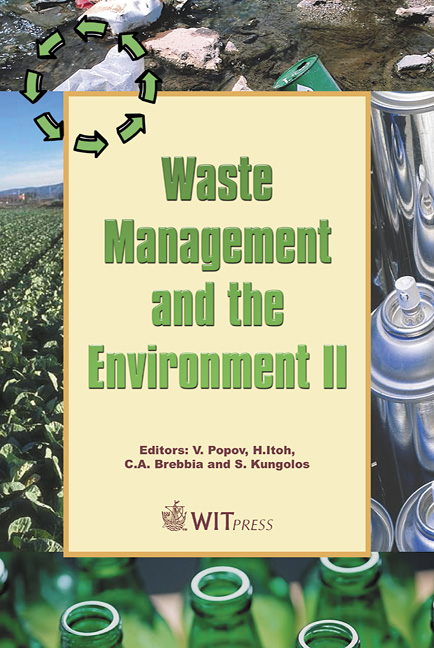Metal Uptake By Algae
Price
Free (open access)
Transaction
Volume
78
Pages
10
Published
2004
Size
419 kb
Paper DOI
10.2495/WM040221
Copyright
WIT Press
Author(s)
K. Jahan, P. Mosto, C. Mattson, E. Frey & L. Derchak
Abstract
Metal uptake by microorganisms has been studied for some years. Research indicates that algae have the ability to accumulate trace metals by biosorption and bioaccumulation. Biosorption is a term designated for all of the passive interactions with metals. In certain sites of the algae cell wall, adsorption reactions occur between the cell wall and the metal ion. Depending on the binding site (functional group on the binding site) and the type of metal, any of several various adsorption reactions can occur. Bioaccumulation reactions, on the other hand, are active reactions in which the metal ions are directly absorbed into the algal cell. The mechanism behind these reactions is generally a defensive one; meaning that the cell is absorbing the metal for the sole purpose of avoiding being poisoned. It is important to note that there is a striking difference in the time for each of these processes. The biosorption process has been shown to be rapid and frequently selective. Biosorption occurs in a matter of minutes while bioaccumulation occurs on a much longer time scale. Uptake of metals by algae may be a viable cost-effective biological pretreatment for the wastewater and water industries. Thus, a study was conducted to identify algae that can accumulate copper and arsenic via rapid biosorption. Common green algae Scenedesmus abundans and Chorella vulgaris were used for determining metal uptake (cupper and arsenic) in batch experiments. Results of the experiments indicated that the algae biosorption could be modeled by the conventional Freundlich and Langmuir isotherm models. Algae morphology studies indicated that the algae cells were impacted due to the presence of both metals as evidenced by clumping or loss of cell clusters. Results indicate that algae uptake of metals may be a viable method of pretreatment of metal contaminated wastewater. Keywords: arsenic, copper, algae, biosorption, metals, Scenedesmus abundans, Chorella vulgaris.
Keywords
arsenic, copper, algae, biosorption, metals, Scenedesmus abundans, Chorella vulgaris.





